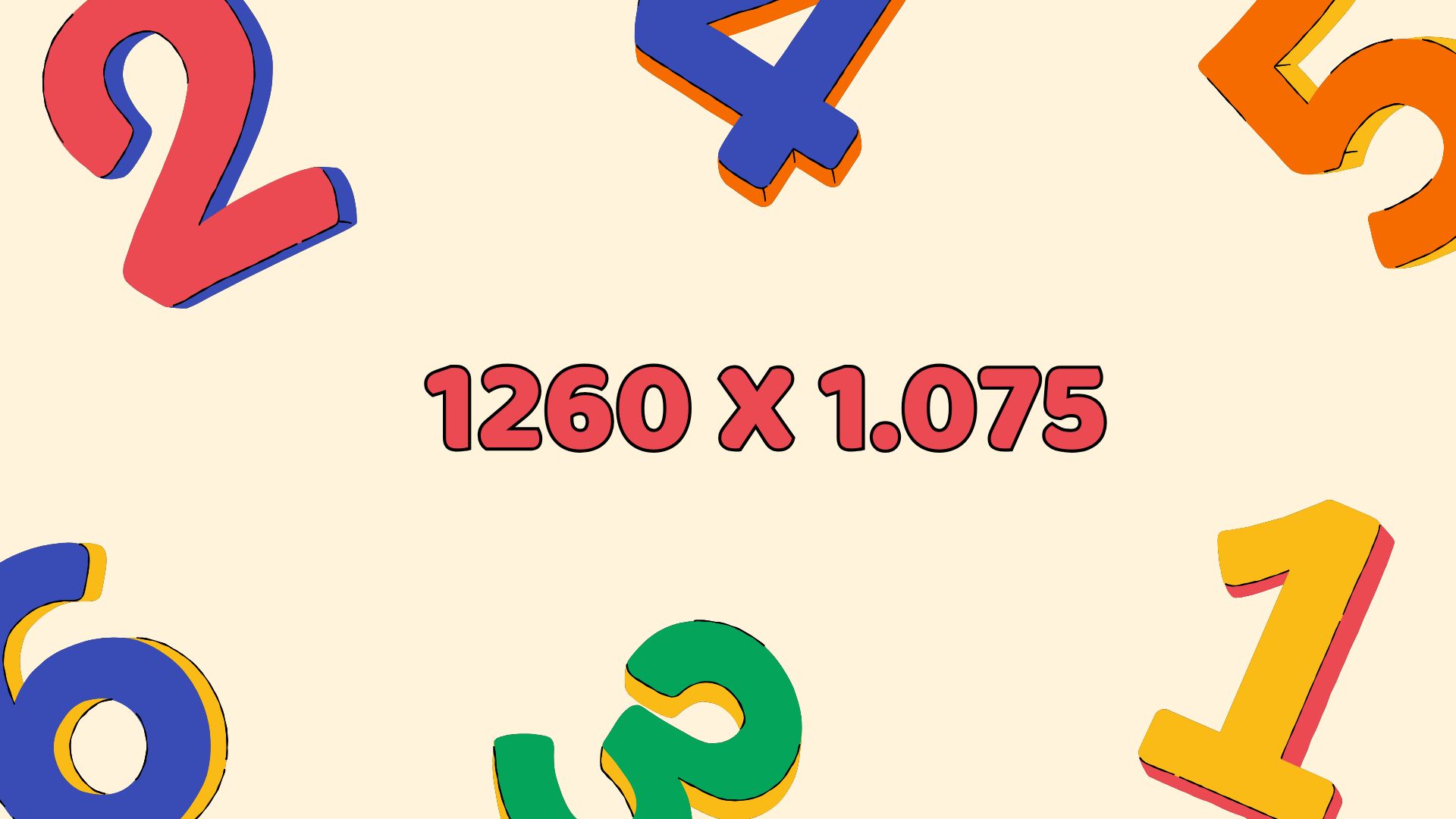1. Introduction to Resolutions and Aspect Ratios
In today’s digital world, screen resolutions and aspect ratios play a pivotal role in defining the visual quality of devices. From smartphones to televisions, and gaming monitors to projectors, these technical specifications determine how content is displayed. Among the many resolutions, “1260 x 1.075” is an intriguing example that sparks curiosity due to its non-standard presentation. This article delves into its significance and applications.
2. What Does 1260 x 1.075 Represent?
Defining the Numbers
The term “1260 x 1.075” can be interpreted in various ways depending on the context. Typically, the first number refers to the pixel width (horizontal resolution), while the second number may represent either a vertical resolution, a scaling factor, or an aspect ratio multiplier.
- 1260: A medium-high horizontal resolution often used in displays or media formats.
- 1.075: Could indicate an aspect ratio multiplier, suggesting a unique format or scaling standard.
Applications in Digital Displays
This resolution is particularly suitable for niche applications in video production, gaming, or creative design where unconventional aspect ratios are preferred. Its unique format enables compatibility with specialized software or hardware configurations.
3. How Resolutions Affect Screen Quality
Screen resolution significantly impacts the clarity, sharpness, and overall user experience. Higher resolutions typically mean better detail and more immersive visuals. Here are key aspects influenced by resolutions like “1260 x 1.075”:
- Pixel Density (PPI): The number of pixels per inch determines sharpness. A higher pixel density ensures crisp images.
- Content Scaling: Resolutions like “1260 x 1.075” might require adaptive scaling for optimal display on various screens.
- Viewing Distance: For close viewing, higher resolutions are essential to avoid pixelation.
4. The Role of Aspect Ratios in Design and Media
Implications for Visual Quality
Aspect ratios, such as the ratio implied by “1.075,” define how content fills a screen. Non-standard aspect ratios can:
- Enhance creative projects with unique framing.
- Offer new perspectives in gaming or immersive media.
Compatibility with Devices
Unconventional resolutions might require specialized hardware or software to ensure seamless integration. Designers and developers need to account for these variations to maintain compatibility.
5. 1260 x 1.075 in Modern Technology
Common Devices Using This Resolution
Although not as widespread as resolutions like 1080p or 4K, “1260 x 1.075” can be found in:
- Custom display panels for professional-grade monitors.
- Augmented Reality (AR) or Virtual Reality (VR) devices.
- Gaming setups with variable aspect ratios.
Industry Trends
With the rise of bespoke content creation, there’s growing demand for flexible resolutions. Non-standard formats like “1260 x 1.075” cater to niche markets, offering creative freedom to developers.
Read Also: Coyyn: Revolutionizing Digital Transactions with Blockchain Technology
6. Challenges and Limitations of Non-Standard Resolutions
- Content Adaptation: Media might need resizing or cropping to fit the resolution.
- Hardware Support: Not all devices support unique formats without significant modifications.
- User Accessibility: Specialized formats might limit accessibility to general audiences.
7. Future of Resolutions in Technology
As technology advances, resolutions are becoming increasingly dynamic, adapting to the demands of emerging applications like AI-driven media, holographic displays, and more. Non-standard formats, including “1260 x 1.075,” might pave the way for innovative design and functionality.
8. Conclusion and Insights
The resolution “1260 x 1.075” represents more than just numbers; it encapsulates a niche in digital display technology where creativity meets functionality. Understanding its implications allows designers, developers, and consumers to appreciate the nuances of screen resolutions and aspect ratios, fostering a deeper appreciation for the technology that shapes our visual experiences.



